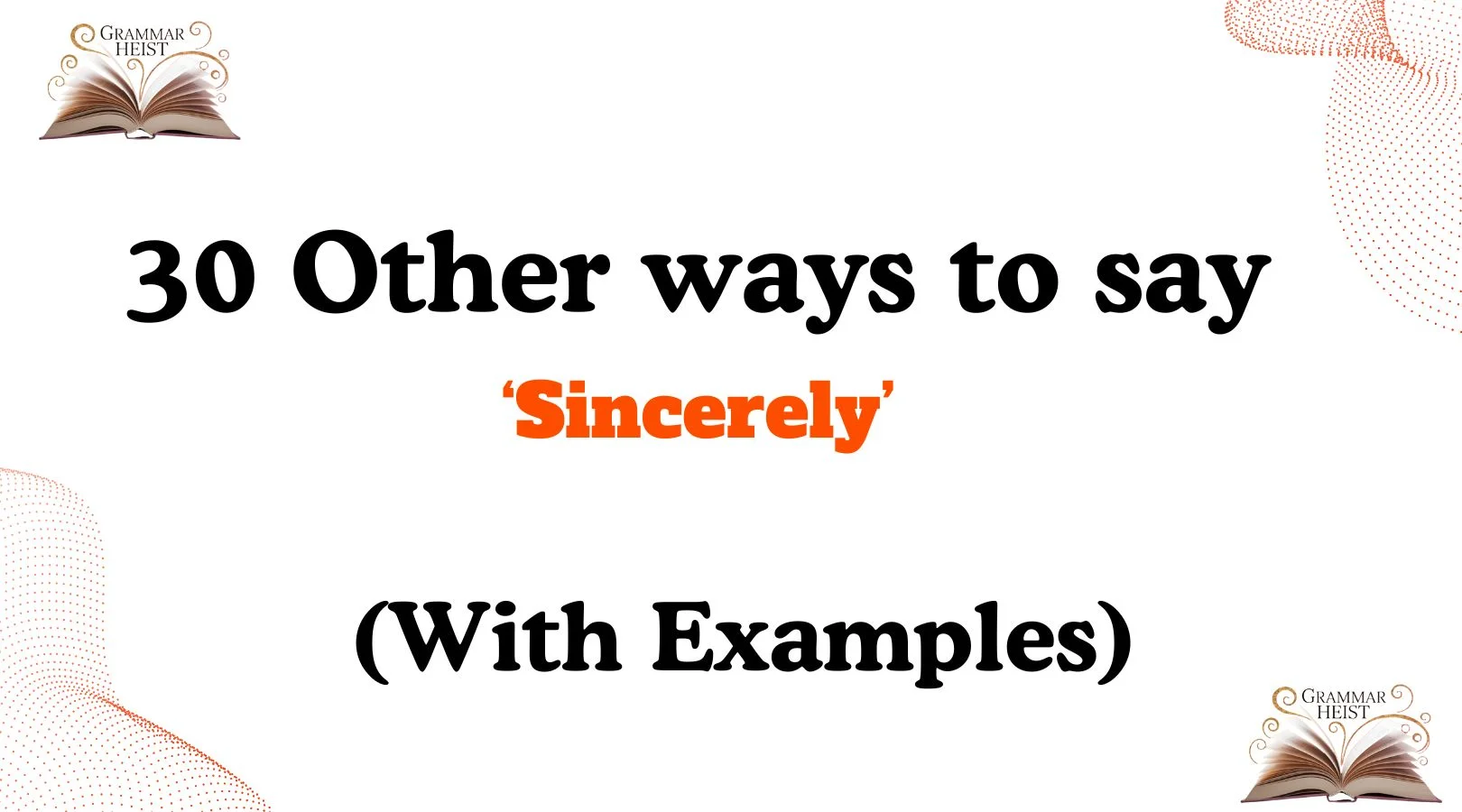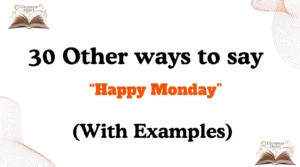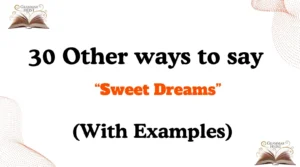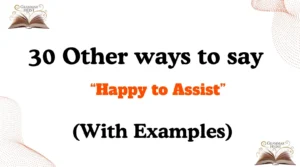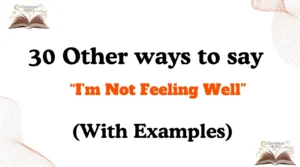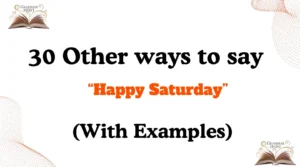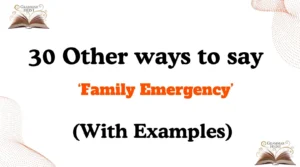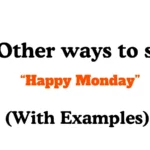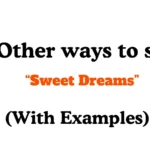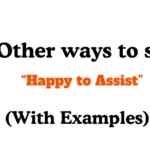When we write a letter, email, or note, the way we close it can leave a lasting impression. Using the right words to express care, respect, and warmth can make a message feel more personal and thoughtful. While “sincerely” is a classic choice, there are many alternatives that can convey your intention with nuance, professionalism, and empathy. Here are 30 other ways to say ‘sincerely’, along with examples and guidance for each.
What Does “Sincerely” Mean?
Sincerely is a closing phrase used to express honesty, genuineness, and respect in a message. It communicates that the writer’s words are heartfelt and truthful.
Is It Professional/Polite to Say “Sincerely”?
Yes. Sincerely is widely considered professional, polite, and appropriate for formal and semi-formal communications, such as business letters, emails, and thank-you notes.
Pros and Cons of Using “Sincerely”
Pros:
- Universally recognized and professional
- Polite and neutral tone
- Suitable for almost any formal communication
Cons:
- Can feel impersonal or generic
- Lacks warmth in more casual or personal messages
Synonyms For “Sincerely”
- Best regards
- Warm regards
- Kind regards
- Yours truly
- Yours faithfully
- Regards
- With appreciation
- Respectfully
- Yours respectfully
- Cordially
- With gratitude
- Many thanks
- With respect
- Truly yours
- Yours sincerely
- Cheers
- All the best
- Best wishes
- Warmly
- Yours warmly
- With best regards
- Faithfully yours
- With heartfelt regards
- In appreciation
- Gratefully
- With best wishes
- Yours in appreciation
- Take care
- With kind thoughts
- With best intentions
1. Best regards
Scenario: Formal or semi-formal emails where you want to remain professional but approachable.
Examples:
- Best regards,
- Warm regards,
- Kind regards,
Tone: Polite, professional, friendly
Explanation: Suitable for most business communications, adds a slightly warmer tone than “sincerely.”
2. Warm regards
Scenario: Professional emails where you want to add a personal touch.
Examples:
- Warm regards,
- Sending warm regards,
- With warm regards,
Tone: Friendly, considerate
Explanation: Shows extra care while remaining professional.
3. Kind regards
Scenario: Common in business emails, especially with clients or colleagues you know. Examples:
- Kind regards,
- With kind regards,
- Best kind regards,
Tone: Polite, professional
Explanation: Slightly softer than “sincerely,” conveys respect and thoughtfulness.
4. Yours truly
Scenario: Traditional letters, formal communications, or personal notes.
Examples:
- Yours truly,
- Always yours truly,
- Truly yours,
Tone: Formal, heartfelt
Explanation: Adds a personal touch, common in both professional and personal letters.
5. Yours faithfully
Scenario: Formal letters, especially when addressing someone unknown or starting with “Dear Sir/Madam.”
Examples:
- Yours faithfully,
- Faithfully yours,
- With faithful regards,
Tone: Formal, respectful
Explanation: Traditional British English closing, signals professionalism.
6. Regards
Scenario: Short emails or quick messages that remain polite but brief.
Examples:
- Regards,
- Best regards,
- Warm regards,
Tone: Neutral, professional
Explanation: Safe, simple, and universally accepted.
7. With appreciation
Scenario: Thank-you notes, acknowledgment emails, or gratitude-focused messages. Examples:
- With appreciation,
- With sincere appreciation,
- Appreciation always,
Tone: Grateful, respectful
Explanation: Highlights gratitude and sincerity in your message.
8. Respectfully
Scenario: Formal letters or emails, especially to superiors or authorities.
Examples:
- Respectfully,
- Respectfully yours,
- With respect,
Tone: Formal, deferential
Explanation: Emphasizes deference, politeness, and professionalism.
9. Yours respectfully
Scenario: Formal communication where respect is key.
Examples:
- Yours respectfully,
- Always respectfully,
- Respectfully yours,
Tone: Polite, professional
Explanation: A step above “sincerely” in formality.
10. Cordially
Scenario: Friendly but formal correspondence.
Examples:
- Cordially,
- Yours cordially,
- With cordial regards,
Tone: Warm, polite
Explanation: Adds friendliness while remaining professional.
11. With gratitude
Scenario: Appreciation letters or messages to colleagues, clients, or friends.
Examples:
- With gratitude,
- Deepest gratitude,
- With heartfelt gratitude,
Tone: Thankful, warm
Explanation: Emphasizes thankfulness and personal touch.
12. Many thanks
Scenario: Casual professional emails or messages where appreciation is shown.
Examples:
- Many thanks,
- Many thanks in advance,
- Thanks so much,
Tone: Friendly, polite
Explanation: Short, approachable, and conveys gratitude.
13. With respect
Scenario: Formal letters or communications requiring courtesy.
Examples:
- With respect,
- Respectfully,
- With all respect,
Tone: Polite, deferential
Explanation: Formal, emphasizes courtesy toward the recipient.
14. Truly yours
Scenario: Personal letters or emails expressing warmth and sincerity.
Examples:
- Truly yours,
- Always truly yours,
- Truly yours always,
Tone: Warm, personal
Explanation: Shows genuine care and connection.
15. Yours sincerely
Scenario: Formal letters addressed to someone by name.
Examples:
- Yours sincerely,
- Sincerely yours,
- With sincere regards,
Tone: Polite, professional
Explanation: Standard formal English closing, widely recognized.
16. Cheers
Scenario: Informal emails or notes among colleagues or friends.
Examples:
- Cheers,
- Many cheers,
- Cheers always,
Tone: Casual, friendly
Explanation: Informal and upbeat, suitable for colleagues and casual communication.
17. All the best
Scenario: Emails, letters, or messages wishing well to the recipient.
Examples:
- All the best,
- Wishing you all the best,
- Best wishes,
Tone: Friendly, warm
Explanation: Conveys positivity and goodwill.
18. Best wishes
Scenario: Letters, emails, or notes with friendly or professional intent.
Examples:
- Best wishes,
- Warmest wishes,
- Sincere best wishes,
Tone: Friendly, professional
Explanation: A versatile closing suitable for most occasions.
19. Warmly
Scenario: Personal letters, notes, or emails conveying warmth.
Examples:
- Warmly,
- Warmly yours,
- With warm regards,
Tone: Personal, heartfelt
Explanation: Adds an intimate, caring touch.
20. Yours warmly
Scenario: Letters or emails with a friendly, warm tone.
Examples:
- Yours warmly,
- Always yours warmly,
- Warmest regards,
Tone: Warm, personal
Explanation: Signals genuine care and warmth.
21. With best regards
Scenario: Formal or semi-formal emails expressing professional courtesy.
Examples:
- With best regards,
- Best regards always,
- Always best regards,
Tone: Polite, professional
Explanation: Slightly more formal than “best regards” alone.
22. Faithfully yours
Scenario: Personal or formal letters emphasizing trust and reliability.
Examples:
- Faithfully yours,
- Yours faithfully,
- Always faithfully yours,
Tone: Respectful, sincere
Explanation: Adds a traditional, trustworthy tone.
23. With heartfelt regards
Scenario: Messages emphasizing genuine care or gratitude.
Examples:
- With heartfelt regards,
- Heartfelt regards,
- Sending heartfelt regards,
Tone: Warm, sincere
Explanation: Highlights deep sincerity and care.
24. In appreciation
Scenario: Gratitude-focused letters or emails.
Examples:
- In appreciation,
- With appreciation,
- Deep appreciation,
Tone: Thankful, professional
Explanation: Communicates gratitude explicitly and sincerely.
25. Gratefully
Scenario: Notes of thanks or acknowledgment emails.
Examples:
- Gratefully,
- Yours gratefully,
- Always gratefully,
Tone: Thankful, sincere
Explanation: Short, warm, and appreciative.
26. With best wishes
Scenario: Letters or emails that combine friendliness and professionalism.
Examples:
- With best wishes,
- Best wishes always,
- Sending best wishes,
Tone: Friendly, polite
Explanation: A polished, versatile closing.
27. Yours in appreciation
Scenario: Thank-you letters or professional acknowledgment messages.
Examples:
- Yours in appreciation,
- Always yours in appreciation,
- In appreciation, yours,
Tone: Grateful, professional
Explanation: Shows respect and gratitude explicitly.
28. Take care
Scenario: Informal emails, letters, or messages to friends or colleagues.
Examples:
- Take care,
- Take care always,
- Take care and best,
Tone: Friendly, caring
Explanation: Casual, warm, and thoughtful.
29. With kind thoughts
Scenario: Letters or emails expressing goodwill or support.
Examples:
- With kind thoughts,
- Sending kind thoughts,
- Kind thoughts always,
Tone: Caring, warm
Explanation: Conveys thoughtfulness and empathy.
30. With best intentions
Scenario: Professional or personal notes emphasizing goodwill.
Examples:
- With best intentions,
- Best intentions always,
- Sending best intentions,
Tone: Thoughtful, sincere
Explanation: Highlights purposefulness and care behind your message.
Conclusion
Choosing the right closing for a message can transform how your words are received. Whether professional or personal, these alternatives to “sincerely” allow you to convey warmth, gratitude, respect, or friendliness. Being intentional about your sign-off strengthens relationships and makes your communication more meaningful.

Emma Rose is a dedicated writing expert with a passion for helping others enhance their communication skills. With a strong background in grammar, language structure, and style, Emma empowers individuals to write with clarity, confidence, and impact. Her approach combines a keen attention to detail with a supportive, personalized touch, ensuring each person she works with improves and grows in their writing journey.
